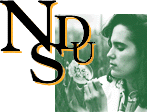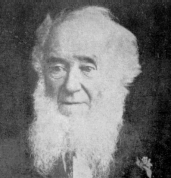 |
|
Biographical & Type Information - W
|
Waga Wagner Walker Wallengren Walton Weber Westhoff |
Westwood White, A. Wolff Wollaston Woodward Wygodzinsky |
Waga, Antoni F. (b. 1799; d. 1890) - Collection conserved in the Institute of Systematic Zoology, Polish Academy of Sciences, Krakow (ISZP). Citations: Larousse (1876), Anonymous (1890), and Mabille (1890).
Wagner, Eduard (b. June 20, 1896, Hamburg, Germany; d. Sept. 11, 1978) - Most of Wagner’s collection is deposited in the Universität Hamburg, Hamburg, Germany (ZMUH), but some of his types in the Eckerlein Collection are now in the Geneva Collection; also, Iranian specimens from Staatliches Mus. Naturkunde, Stuttgart, Germany (SMNS). Wagner, in many of his early papers, usually gave the total number of % & & specimens in the type series, and he usually indicated the collection localities, and museum deposition, but he did not usually connect the two. It is often impossible to tell from the original description exactly what the type locality is, or what sex the HT is. See Ribes & Goula (1986) and Aukema (1999) for information on the Wagner Miridae types conserved in ZMUH. Citations: Weber (1976) and Tamanini (1979).
Walker, Francis (b. July 31, 1809,
Southgate, England; d. Oct. 5, 1874, Wanstead, England) - Controversial figure
who published 87 papers on a variety of groups including Orthoptera, Neuroptera,
Homoptera, Diptera, Lepidoptera, and Hymenoptera (he described over 20,000 new
species of insects). Stories abound about his description of new taxa for
payment (1 shilling for each new species, and 1 pound for each new genus), thus
resulting in poor systematics. These stories are false however; Walker
contracted a lump sum for each catalog he produced (Evenhuis, 2011). His contemporary, StDl,
so infuriated by Walker’s alleged incompetence, proposed that his work be
ignored (StDl 1862), and he himself
largely ignored many of Walker’s papers; this sadly resulted in a number of StDl’s
names falling as junior synonyms of Walker’s taxa. His descriptions were often
short and vague, and the taxonomic placement so poor that many subsequent
workers erred because they could not recognize Walker’s species. Distant
(1899), who organized and corrected much of Walker’s work on the Pentatomomorpha,
put it this way: "I have myself felt the great inconvenience -- to use no
stronger term -- of sinking some of my own species when, to employ a parabolic
expression, I found that my snipe had been previously described by Walker as
pigeons." In fact, in an obituary, an anonymous author (1874) wrote "More than
twenty years too late for his scientific reputation, and after having done an
amount of injury to entomology almost inconceivable in its immensity, Francis
Walker has passed from among us." Most of the material Walker studied is
in the British Museum of Natural History (BMNH). Some of his material is now in
the Museum of Victoria, Melbourne (See Walker, K.L., 1985, 5th no. of
Tymbal, or Antenna, 1985, for list). In most of his original descriptions,
Walker indicated how many specimens he had by listing them with letter bullets.
Each specimen was represented by a different letter; even multiple specimens
from a single locality were represented by a different letters (e.g. a-c). He
did not designate types, so if multiple letters are given, then the specimens
should be considered STS; if a single letter is listed, this one specimen should
be regarded as the HT. The only exception to this is when the specimens were
deposited in museums other than the BMNH (e.g. Melbourne), then he did not use
his lettering system, and all specimens should be regarded as STS. At no time
does he indicate the sex of any of the specimens. Here again, someone has placed
"type" labels on some of the specimens. These have not been published, and so
should not be considered as valid type designations. In a few cases,
Walker’s types are missing. The following anecdote gives an explanation for why
some types have not been located (Butler 1876). "Mr Walker comes one day and
describes a new species; but, owing to the lateness of the hour, or some other
cause, omits to label it as a type; the next time he comes to the collection he
continues his MS., and, finding this species without a label forthwith
redescribes it. This will, I think, account for several instances which I have
noticed of evidently the same species described twice over in consecutive pages
of Walker’s Catalogues." Citations: Swainson (1840), Anonymous (1874a, b,
1875), Carrington (1874), Newman (1874a, b, 1875, 1907), Saunders (1874),
Strecker (1878), Distant (1907), Essig (1931), Musgrave (1932), Osborn (1937),
Lizer y Trelles (1947), Papavero (1975), and Evenhuis (2011).
genus), thus
resulting in poor systematics. These stories are false however; Walker
contracted a lump sum for each catalog he produced (Evenhuis, 2011). His contemporary, StDl,
so infuriated by Walker’s alleged incompetence, proposed that his work be
ignored (StDl 1862), and he himself
largely ignored many of Walker’s papers; this sadly resulted in a number of StDl’s
names falling as junior synonyms of Walker’s taxa. His descriptions were often
short and vague, and the taxonomic placement so poor that many subsequent
workers erred because they could not recognize Walker’s species. Distant
(1899), who organized and corrected much of Walker’s work on the Pentatomomorpha,
put it this way: "I have myself felt the great inconvenience -- to use no
stronger term -- of sinking some of my own species when, to employ a parabolic
expression, I found that my snipe had been previously described by Walker as
pigeons." In fact, in an obituary, an anonymous author (1874) wrote "More than
twenty years too late for his scientific reputation, and after having done an
amount of injury to entomology almost inconceivable in its immensity, Francis
Walker has passed from among us." Most of the material Walker studied is
in the British Museum of Natural History (BMNH). Some of his material is now in
the Museum of Victoria, Melbourne (See Walker, K.L., 1985, 5th no. of
Tymbal, or Antenna, 1985, for list). In most of his original descriptions,
Walker indicated how many specimens he had by listing them with letter bullets.
Each specimen was represented by a different letter; even multiple specimens
from a single locality were represented by a different letters (e.g. a-c). He
did not designate types, so if multiple letters are given, then the specimens
should be considered STS; if a single letter is listed, this one specimen should
be regarded as the HT. The only exception to this is when the specimens were
deposited in museums other than the BMNH (e.g. Melbourne), then he did not use
his lettering system, and all specimens should be regarded as STS. At no time
does he indicate the sex of any of the specimens. Here again, someone has placed
"type" labels on some of the specimens. These have not been published, and so
should not be considered as valid type designations. In a few cases,
Walker’s types are missing. The following anecdote gives an explanation for why
some types have not been located (Butler 1876). "Mr Walker comes one day and
describes a new species; but, owing to the lateness of the hour, or some other
cause, omits to label it as a type; the next time he comes to the collection he
continues his MS., and, finding this species without a label forthwith
redescribes it. This will, I think, account for several instances which I have
noticed of evidently the same species described twice over in consecutive pages
of Walker’s Catalogues." Citations: Swainson (1840), Anonymous (1874a, b,
1875), Carrington (1874), Newman (1874a, b, 1875, 1907), Saunders (1874),
Strecker (1878), Distant (1907), Essig (1931), Musgrave (1932), Osborn (1937),
Lizer y Trelles (1947), Papavero (1975), and Evenhuis (2011).
Wallengren, Hans Daniel Johan (b. 1823; d. Oct. 24, 1894, Farhult, Sweden) - Some of his collection resides in Museum Malmö, Malmö, Sweden (MUMS); some may be in Lund Museum and some may be in NHRS. Citations: Bergroth (1874), Anonymous (1895a, b), Aurivillius (1895), Kraatz (1895), McLachlan (1895) and Musgrave (1932).
Walton, G. A. - Worked primarily on the British aquatic and semi-aquatic bugs.
Weber, H. H. - Collection is deposited in the Zoologische Staatssammlung, Münich, Germany (ZSMC).
Westhoff, Fritz (b. 1857; d. Nov.
12, 1896) - PI: Westfäl. Prov. Mus.
Naturkunde, Münster, Germany (MNWM).
Citations: Anonymous (1896a, b, 1897a, b) and Reeker (1897).
Westwood, John Obadiah
(b. Dec. 22,
1805, Sheffield, England; d. Jan. 2, 1893, Oxford, England) - Was a Hope
professor at Oxford University where he worked on all orders of insects.
Published "An Introduction to the Modern Classification of Insects" (1839-1840).
Collection is conserved in the Oxford University Museum (OXUM), although
 Blöte
(1931, 1934, 1935, 1936, 1938, 1945, 1965), in his series of catalogs contained
in the Leiden collection (RMNH) indicated that there were a number of cotypes of
Westwood's species in the RMNH. Citations: Swainson (1840), Strecker (1878), Godman (1892), Anonymous (1893a-e), Bethune
(1893), Distant (1893), Cambridge (1893), Dohrn (1893), McLachlan (1893),
Sandahl (1893), Wandolleck (1893), Weir (1893), Kraatz (1894), Bordas (1923),
Howard (1930), Musgrave (1932), Neave (1933), and Papavero (1975).
Blöte
(1931, 1934, 1935, 1936, 1938, 1945, 1965), in his series of catalogs contained
in the Leiden collection (RMNH) indicated that there were a number of cotypes of
Westwood's species in the RMNH. Citations: Swainson (1840), Strecker (1878), Godman (1892), Anonymous (1893a-e), Bethune
(1893), Distant (1893), Cambridge (1893), Dohrn (1893), McLachlan (1893),
Sandahl (1893), Wandolleck (1893), Weir (1893), Kraatz (1894), Bordas (1923),
Howard (1930), Musgrave (1932), Neave (1933), and Papavero (1975).
White, Adam D. (b. Apr. 24, 1817, Edinburgh; d. Jan. 4, 1879, Glasgow) - Collection deposited in the Museum of Natural History, London (BMNH). Citations: Anonymous (1879a-d), Dunning (1879, 1880), McLachlan s(1879), Musgrave (1932), and Miller (1973).
Wolff, J. F. (1778-1806) - German. His most important work was produced in two languages, the latin version was titled Icones Cimicum Descriptionibus Illustratae, and the german version was titled Abbildungen der Wanzen mit Beschreibungen. Both were published in five volumes from 1800 to 1811. The two versions had similar, but not identical, pagination. Most types are probably lost, but some may be in the Sturm Collection, in Munich.
Wollaston, Thomas Vernon (b. Mar. 9, 1822; d. Jan. 4, 1878, Teignmouth) - Most of collection is probably in the Museum of Natural History, London (BMNH). Citations: Anonymous (1878a-e, 1879, 1882), Kraatz (1878), E.C.R. (1878), Westwood (1878), and Musgrave (1932).
Woodward, Thomas Emmanuel (b. June 8, 1918, Auckland, New Zealand; d. Nov. 22, 1985, Brisbane, Australia) - Citations: Monteith (1986), Southwood and Simpson (1986), and Edwards (1988).
Wygodzinsky, Petr Wolfgang (b. Oct. 5, 1916, Bonn, Germany; d. Jan. 27, 1987, Middletown, NY, USA) - Worked on several groups, but especially the Reduviidae. S&S: "Collection deposited American Museum of Natural History, New York." See Schuh & Herman (1988) for biography and bibliography.
David A. Rider
Professor of Entomology
North Dakota State University
E-Mail:
David.Rider@ndsu.edu
updated: 04 Apr 2018
Published by the
Department of
Entomology
Prospective students may schedule a visit by calling 1-800-488-NDSU.